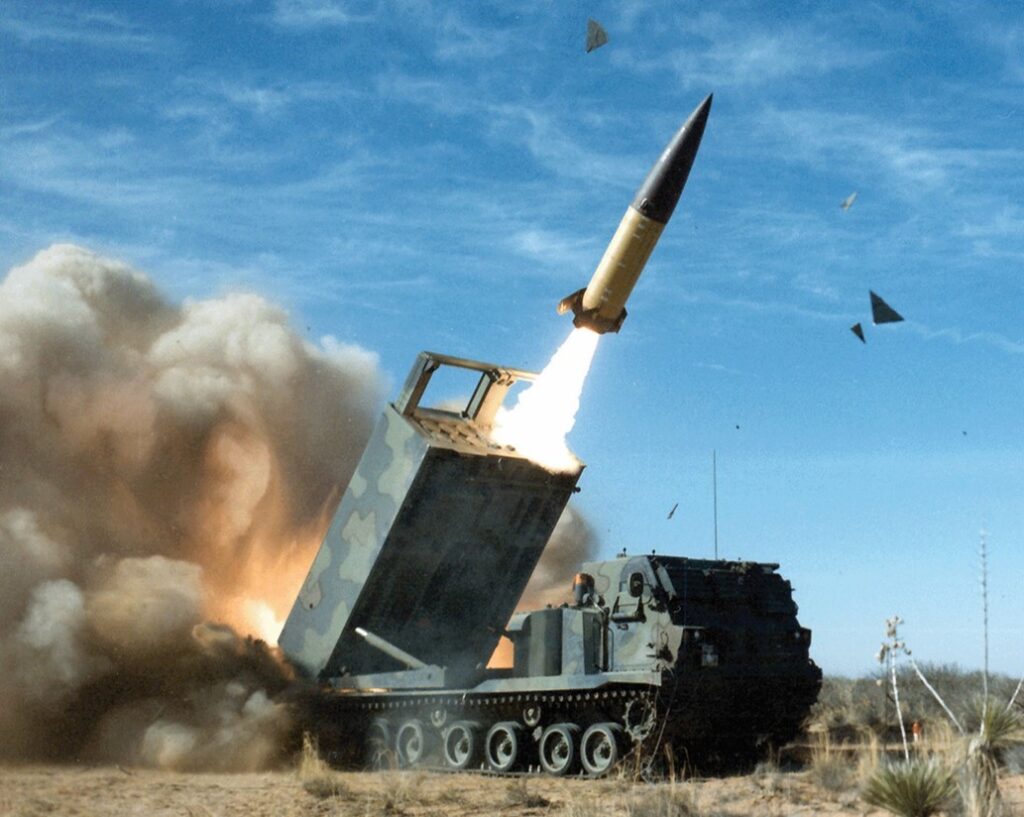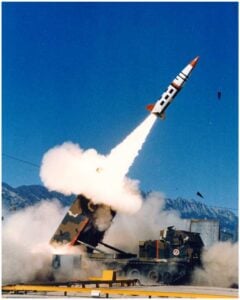Carter, Roper Unveil Army’s New Ship-Killer Missile: ATACMS Upgrade
Posted on

Army ATACMS missile launch.
UPDATED with William Roper comments WASHINGTON: The Army’s long-range artillery rocket, ATACMS, will get upgraded to strike moving targets on land and at sea, Defense Secretary Ashton Carter announced today. After at least two years of pressure from Congress and vague promises from Pentagon leaders, and for the first time since the Coastal Artillery Corps was disbanded 66 years ago, the Army is officially back in the business of killing ships. That gives the largest service a big new role in countering Russian aggression in the Baltic and Black Seas or defending allies like the Philippines against China.

Ashton Carter
The project to upgrade the Lockheed-built ATACMS is sponsored by the Strategic Capabilities Office, created by Carter back in 2012 and headed by his protégé, Will Roper. (Our exclusive interview with Roper is here and here). SCO’s involvement, incidentally, explains why no one in the Army or industry told me this was happening, despite countless queries: SCO keeps secrecy locked tight — its very existence was classified at first — unless and until they decide the deterrent value of letting adversaries know about a weapon in peacetime outweighs the tactical value of surprising them with it in wartime.
“How you offset the adversaries trying to offset your offset? It’s very simple to do that, you just don’t talk about your best capabilities,” Roper said today at a Center for Strategic and International Studies panel. “We are keeping our best ideas behind the door and probably always will.”
“We thought it was important to come out (in public) with ATACMS for the Army because there’s been a lot of writing, a lot of speeches, on the need for the Army to go cross-domain,” Roper elaborated to reporters after the panel. Army leaders from Chief of Staff Gen. Mark Milley on down, and even other services’ leaders like Pacific Command chief Adm. Harry Harris, have publicly called for the Army to extend its reach out to sea, crossing traditional boundaries between what Pentagon doctrine calls the land and sea domains. So, said Roper, “it’s time for us to show it isn’t just a theoretical idea, it’s something we can potentially get to quickly with something that we already have.”

CSBA graphic
Wringing new capabilities out of existing systems is SCO’s signature style, From ejecting 3D-printed mini-drones out of a fighter jet’s flare dispenser, to reprogramming the SM-6 anti-aircraft missile to strike ships as well, Roper’s team aren’t mad scientists inventing wonder weapons, they’ve McGyvers improvising with whatever’s on hand.
“A prominent theme of SCO’s work is spearheading creative and unexpected new ways to use our existing missiles and advanced munitions, and across varied domains,” Carter said this morning at CSIS. “One example of this that I want to highlight – something I haven’t talked about publicly before today – is SCO’s project to develop a cross-domain capability for the Army Tactical Missile System, or ATACMS. By integrating an existing seeker onto the front of the missile, they’re enabling it to hit moving targets, both at sea as well as on land. With this capability, what was previously an Army surface-to-surface missile system can project power from coastal locations up to 300 kilometers into the maritime domain.”

Defense Secretary Ash Carter talks to Strategic Capabilities Office director William Roper at Submarine Base New London.
“My goal is to develop and demonstrate an ATACMS that’s capable of hitting moving targets at land and sea,” Roper said. “We’re bringing in seeker technology that’s being developed in the Department (of Defense)” already.
“We’re very likely to succeed on this, because we’ve got the technologies on hand,” Roper told reporters. “It’s just a question of whether we’re lucky and they’ll fit together Frankenstein-style or whether there’s some peculiarity of the missile that makes integrating a seeker on it difficult.”
In other words, rather than develop the Army a purpose-built shore-based anti-ship missile, or even buying one of the many available on the global market, the project is taking an existing, proven weapon, ATACMS, and fitting it with a guidance system developed for a different weapon altogether. Currently, ATACMS can only navigate to a specified set of coordinates, so it can only hit static targets with precision. (It can hit moving targets, like tanks, by blanketing their general area with cluster munitions, but the US is phasing those out). With a seeker added, however, ATACMS can pick out a moving target and home in on it. And once you’ve made a missile capable of hitting moving targets of whatever kind, industry officials have told me, it’s relatively easy to make it capable of hitting targets on both land and sea.

Army Tactical Missile System (ATACMS) launch
That’s something I learned, incidentally, while researching ATACMS’ longer-ranged successor, the Long-Range Precision Fires program. The current requirement for LRPF doesn’t include the capability to strike moving targets, either on land or at sea, but the new missile must be at least as capable as the ATACMS. That strongly implies that if the current ATACMS gets an anti-ship capability, the future LRPF will get it too.
But why does the Army need to sink ships, anyway? Don’t we have a Navy for that? The answer lies in evolving concepts like Multi-Domain Battle and the Third Offset Strategy, the topic of today’s CSIS conference. In essence, 25 years after the stunning debut of stealth, smart weapons, and GPS in the First Gulf War, potential adversaries have not only copied most of those technologies but woven them together into complex, layered defenses designed to keep US forces at bay — so-called Anti-Access/Area Denial (A2/AD) systems. In particular, both China and Russia have invested heavily in long-range missiles, and the requisite sensors and command networks, that are based on land but can shoot down US aircraft high in the air or sink US ships well out at sea. (The most notorious example is the Chinese DF-21 anti-ship ballistic missile, nicknamed the “carrier killer.”)
In such a lethal war zone, land-based missile batteries have one huge advantage: They can’t sink. That’s something our enemies have exploited for years. Now the US military will seize that advantage for itself.
“We’ve been working on it with the Army for a couple of years,” Roper said of the anti-ship missile. “When we first started, it was a program that could have great support and great antipathy, sometimes within the same organization.” But since then, as the Army as reoriented away from massive counterinsurgencies to great power threats, “you’ve seen a lot of evolution of Army thinking about what landpower is going to be in the 21st century,” he said, “They have all rallied around this idea that landpower can enable other domains.”
So where once enemy fleets only had to worry about American ships, subs, and aircraft, Roper said, now they have to worry about American land-based missiles as well: “If you’re an adversary, you have a much more complex thing to plan against.”
Subscribe to our newsletter
Promotions, new products and sales. Directly to your inbox.
